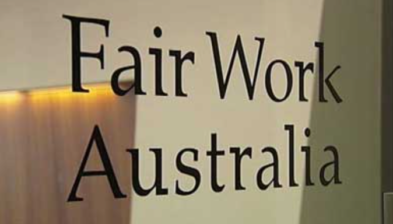It is in a company’s best interest to offer flexible workplace arrangements
By Alan J. McDonald

With Mothers’ Day coming up on Sunday 13th May, it’s a good time to recognise and celebrate the contribution of working mothers to the Australian economy.
Director of the Workplace Gender Equality Agency (WGEA), Libby Lyons says Australian women are increasingly active participants in the workforce while still performing close to double the unpaid domestic work as men.
“If we are to continue to shrink the workforce participation gap between women and men – with all the business and economic benefits this delivers – it is important that employers value every mothers’ contribution at work and remove barriers to their participation.”
“Important ways employers can support mothers include offering access to flexible work – even in senior roles; providing proactive support for return to work from parental leave; as well as supporting their male employees to take an active role at home through flexibility, and access to carers’ leave.”
Ms Lyons also said supporting new mothers who are coming back to work is vitally important – the investment retains skilled staff members, and boosts staff morale and organisational efficiency.
“There are broader economic benefits too, with OECD research forecasting GDP growth of 12% over the next two decades if women’s workforce participation rate matched men’s.”
Principal lawyer from employment lawyers McDonald Murholme, Andrew Jewell, says that all parents who have been with a company for more than 12 months have the right to ask for flexible work arrangements and where possible, it is in the best interest for companies to grant these arrangements for its employees.
“By choosing to be flexible with hours and/or location of work, you are creating a working environment that not only attracts prospective employees, but that will also see a higher retention of current employees.”
Mr Jewell also argues that allowing flexible working arrangements for parents is conducive to keeping women in the workforce and thus maintaining a gender balance.
“The amount of time women spend out of the workforce to look after their children is likely to lessen if their employer is flexible with their return to work options, and / or their partner’s employer is sympathetic to their hours.”
McDonald Murholme’s own Senior Law Clerk / HR Advisor of 20 years and Super-Mum, Julie Kojdovska, balances a full-time week, with two children aged 14 and 10. This juggling act is managed alongside her husband and through very early start times.
“I’m on the train at 5:00am, so I can be in the office and working from 6:00am,” Mrs Kojdovska said. “This means I can get home to pick up the kids from school in time which is important to me.”
According to Mrs Kojdovska, being able to work flexible hours played a big part in her ability to continue work after pregnancy.
“If it wasn’t for the option to start earlier, I may have had to drop to a part time load in order to fulfil my role as a mum,” she said.
WGEA has some innovative ideas how Australian employers can support mothers at work, including:
- Onsite or subsidised childcare
- Payment of superannuation during paid and/or unpaid parental leave
- ‘Stay in touch’ schemes during parental leave
- Return-to-work bonuses to help women cover the costs of returning from parental leave
- ‘Returnship’ schemes to help women who have been out of the workforce for a period of time.
Reference: It is in a company’s best interest to offer flexible work arrangements, Australian Women Online, Thursday 10th May 2018.
-
 High Uni Fees but Academics Underpaid
High Uni Fees but Academics Underpaid -
 Reserve Bank interest rake hike and job losses
Reserve Bank interest rake hike and job losses -
 Labour shortages, inflation, recession looming and workplace disputes
Labour shortages, inflation, recession looming and workplace disputes -
 Paid family and domestic violence leave is to be introduced in Australia: here’s how it affects you
Paid family and domestic violence leave is to be introduced in Australia: here’s how it affects you -
 Virtual assistants; mumpreneurs’ secret weapon
Virtual assistants; mumpreneurs’ secret weapon -
 McDonald Murholme guide to the Fair Work Act – The Australian
McDonald Murholme guide to the Fair Work Act – The Australian